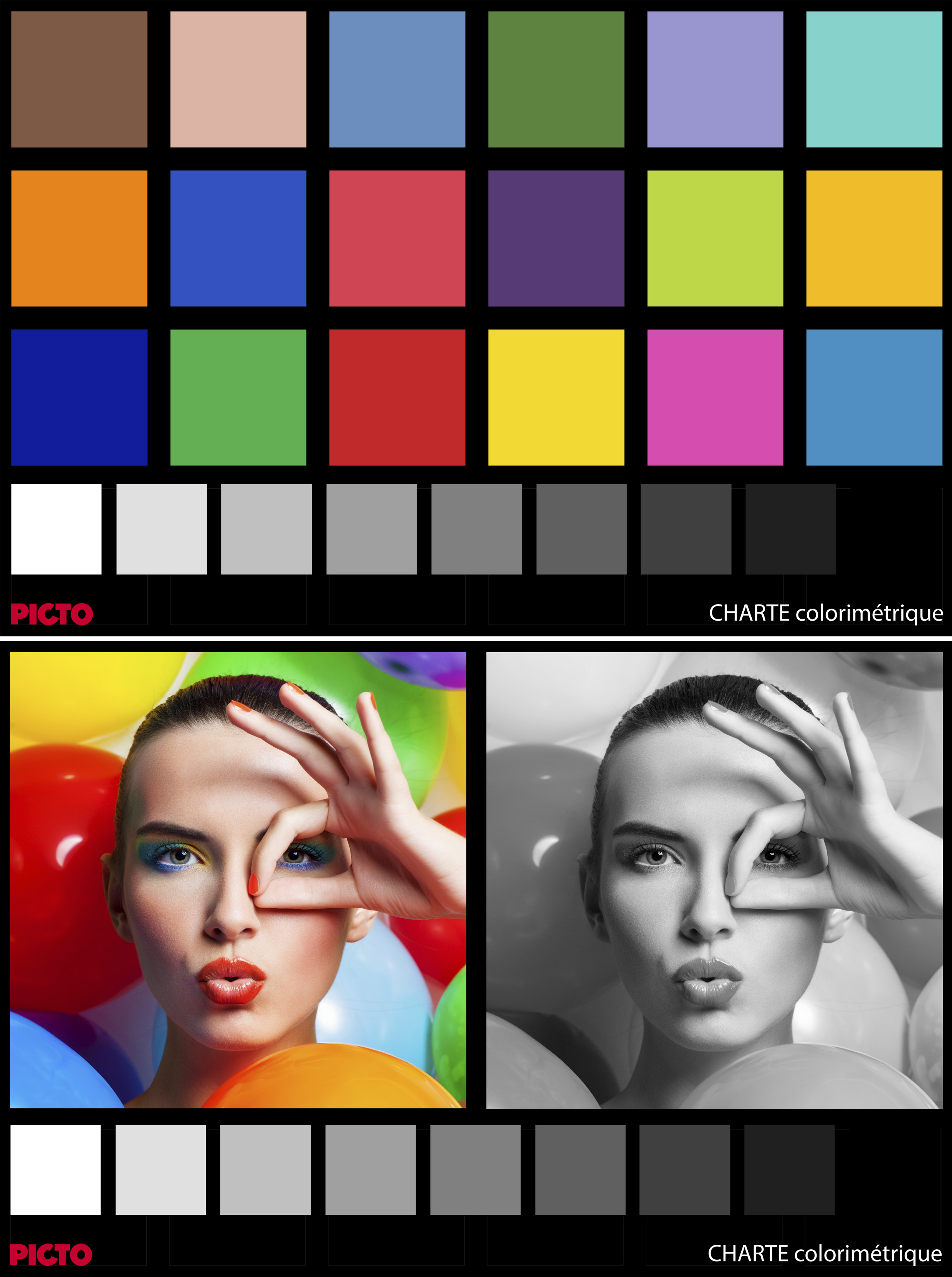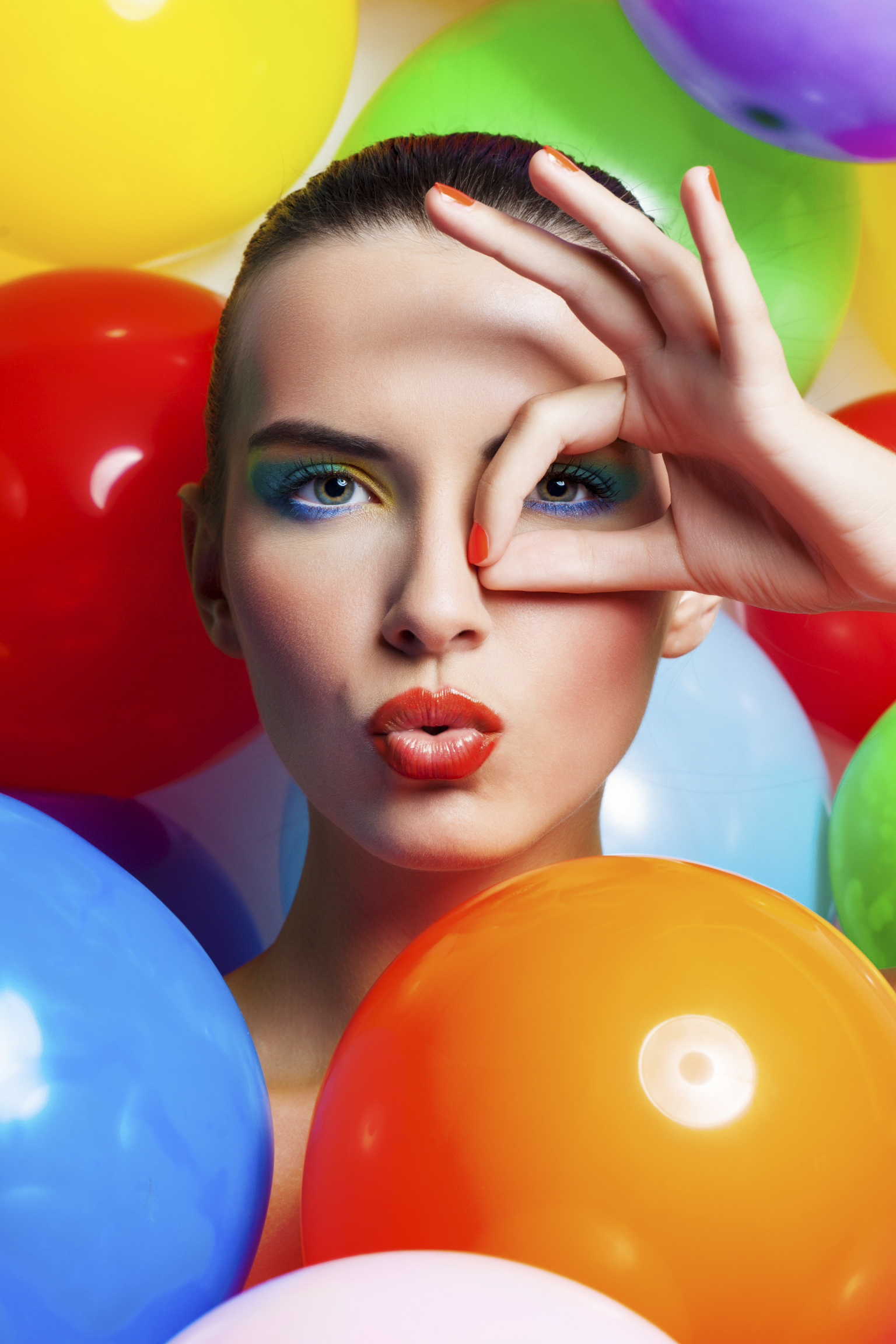Help / Adjust or Calibrate Your Screen
Standard screen settings
A monitor, whether fixed or portable, has a brightness setting*.
The screen works on the basis of backlighting to display all the visual elements of your workstation.
Most fixed monitors have physical buttons with a menu of settings (contrast, brightness, colours...).
Laptop monitors have the same settings, but this time internally, so you can change them electronically.
A screen that is not calibrated correctly and/or whose screen display deviation from the print is known and managed by you can be quite satisfactory for preparing your future prints.

Generally the menus concerning brightness describe a percentage scale from 0 to 100, 0 being the minimum brightness of the screen backlight and 100 the maximum value *.
Caution:
Displays are often delivered with a default brightness setting that is far too high for preparing photographic prints!
If this high brightness enhances the display of your image on the screen in order to obtain a flattering rendering, the quantity of light is not adapted to prepare photo prints which will be viewed under a much less bright light.
You should not hesitate to reduce the brightness by 30% to 50% from the factory setting.
Quickly evaluate your screen
In the "Quickly evaluate your screen" help page, you can download a PICTO image and display it on your screen.
For more information: "Quickly evaluate your screen"
In summary :
- Avoid modules that automatically adjust the brightness of your screen.
- To ensure that you can judge your images consistently from one day to the next, choose a brightness and never change it again.
- Be careful not to render your screen too flattering, impossible to reproduce on a print:
- Avoid exceeding 50-60% of the brightness scale.
- Stay between 30 and 50% of brightness for your monitor.
An acceptable luminance for image management and comparison should be between 80 and 160 cd/m2. There are two types of standard settings available for brightness: electronic (directly on the screen (hardware setting) and computer (via the computer's operating system (OS) or the software of the graphics card).
Going further...
Calibrated screen settings
Case #1 / Practical evaluation*:
Your images are intended for printing, and you have standard office-type ambient lighting for practical print viewing. The recommended settings are as follows:
- Color temperature: D50; 5,000 K +/- 500
- Gamma: 2.2
- Luminance: 90 cd/m² +/- 10
- Print viewing area lighting: 500 lux +/- 125 (Condition P2 of the ISO 3664:2009 international standard)
*Prints are evaluated under conditions close to final viewing conditions, with a low illumination level.

Case #2 / Critical comparison:
Your images are intended for printing, and you have professional-standard equipment for evaluating prints (e.g., JUST Normlicht viewing booth). We recommend the following settings:
- Color temperature: D50; 5,000 K +/- 500
- Gamma: 2.2
- Luminance: 120 cd/m²
- Proof viewing area lighting: 2000 lux +/- 500 (Condition P1, in compliance with ISO 3664:2009 international standard)
Remember to name your profile with its creation date and the parameters used, making it easy to find and refer to later.

Also see Adobe's recommendations (Photoshop, Lightroom) for screen calibration:
https://www.adobe.com/fr/creativecloud/video/discover/how-to-calibrate-monitor.html
Don't hesitate to make test prints to ensure a good match between your screen and your print viewing conditions. (See section "View your images and prints")
Some common discrepancies between screen and print:
- If your screen is set to 160 cd/m² brightness (too bright), the prints you receive will appear too dark.
- If your screen is set to a color temperature of 6500K, the prints you receive will appear too yellow (too warm).
- If your print viewing light is at a color temperature of 6500K, the prints you receive will appear too blue (too cool).
- If your print viewing light is 500lx (standard home/office lighting), the prints you receive will appear too dark.
- These discrepancies must be corrected by you; we do not modify your images.
Download PICTO reference images
We offer downloadable examples of images we use daily as PICTO references.
Once downloaded to your computer, you can visually check the consistency of your screen display (for example, ensure density patches from white to black are all discernible, the black-and-white portrait is neutral, etc.).
From these downloaded files, you can also create your own PICTO Online reference prints to compare with your screen and your print viewing environment.
If you have a copy of the "Le Book" PICTO paper sample (available in our Store), you can compare the cover and included prints with the displayed image on your screen.
PICTO brand book:
PICTO Colour brand book - September 2019 V1et2 - ICC source profile : Adobe RGB 98Download the file
The PICTO Online Book :
Image used for "The Book" PICTO Online - September 2019 V1 - ICC source profile : Adobe RGB 98Download the file

